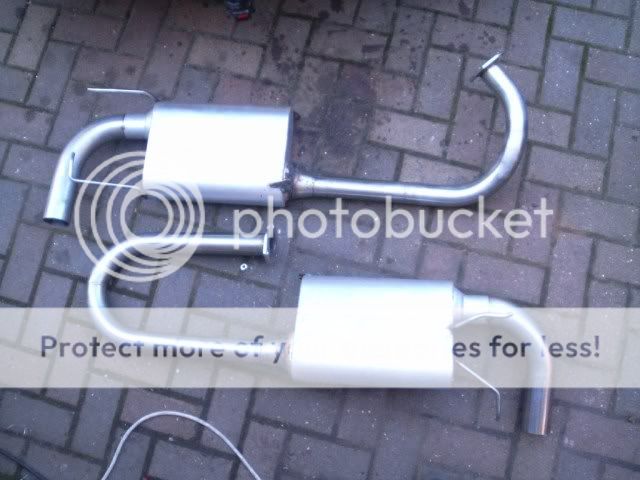I need some help thinking about the effects of the cylinder firing order in terms maximizing scavenging effects at the header collector and further down stream in the exhaust. If both header banks dump into a mixing/collection chamber, say 1 cubic feet in volume, will I run the risk of blowing exhaust gasses from one bank into the other bank essentially incurring a reverse the flow?
For example, if one piston is in it's exhaust stroke in bank 1 and another piston in bank 2 is in it's intake stroke will I run into a potential problem with exhaust wanting to "blowback" into bank 2? I believe its dependent on the firing order which is 1-4-2-5-3-6 for the NSX.
This doesn't seem to be a problem in a correct X-pipe designs that flow well but in looking at the stock exhaust design (thanks for the image trevvvvvv!) Honda combines exhaust gasses from both banks in a mixing chamber albeit it there's a lot more crap going on to dissipate pressures and the stock exhaust flows poorly.

You might be wondering why i'm going thru this. I'm not 100% happy with the exhaust options out there. My current design calls for a mixing chamber to reduce weight. If this "blowback" issue becomes a problem then I will have to separate each bank into it's own muffer (not ideal for weight concerns).
For example, if one piston is in it's exhaust stroke in bank 1 and another piston in bank 2 is in it's intake stroke will I run into a potential problem with exhaust wanting to "blowback" into bank 2? I believe its dependent on the firing order which is 1-4-2-5-3-6 for the NSX.
This doesn't seem to be a problem in a correct X-pipe designs that flow well but in looking at the stock exhaust design (thanks for the image trevvvvvv!) Honda combines exhaust gasses from both banks in a mixing chamber albeit it there's a lot more crap going on to dissipate pressures and the stock exhaust flows poorly.
You might be wondering why i'm going thru this. I'm not 100% happy with the exhaust options out there. My current design calls for a mixing chamber to reduce weight. If this "blowback" issue becomes a problem then I will have to separate each bank into it's own muffer (not ideal for weight concerns).
Last edited:












